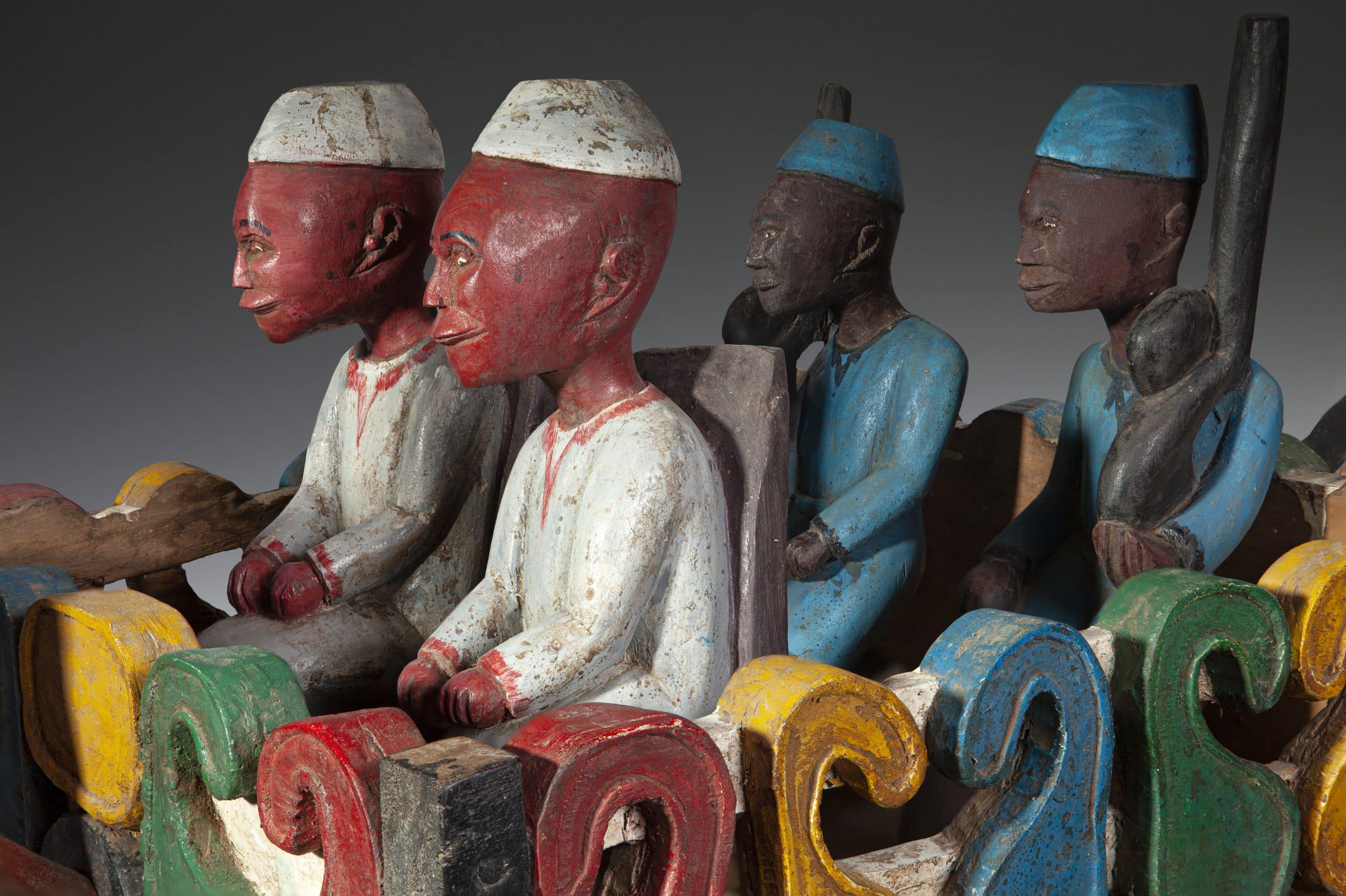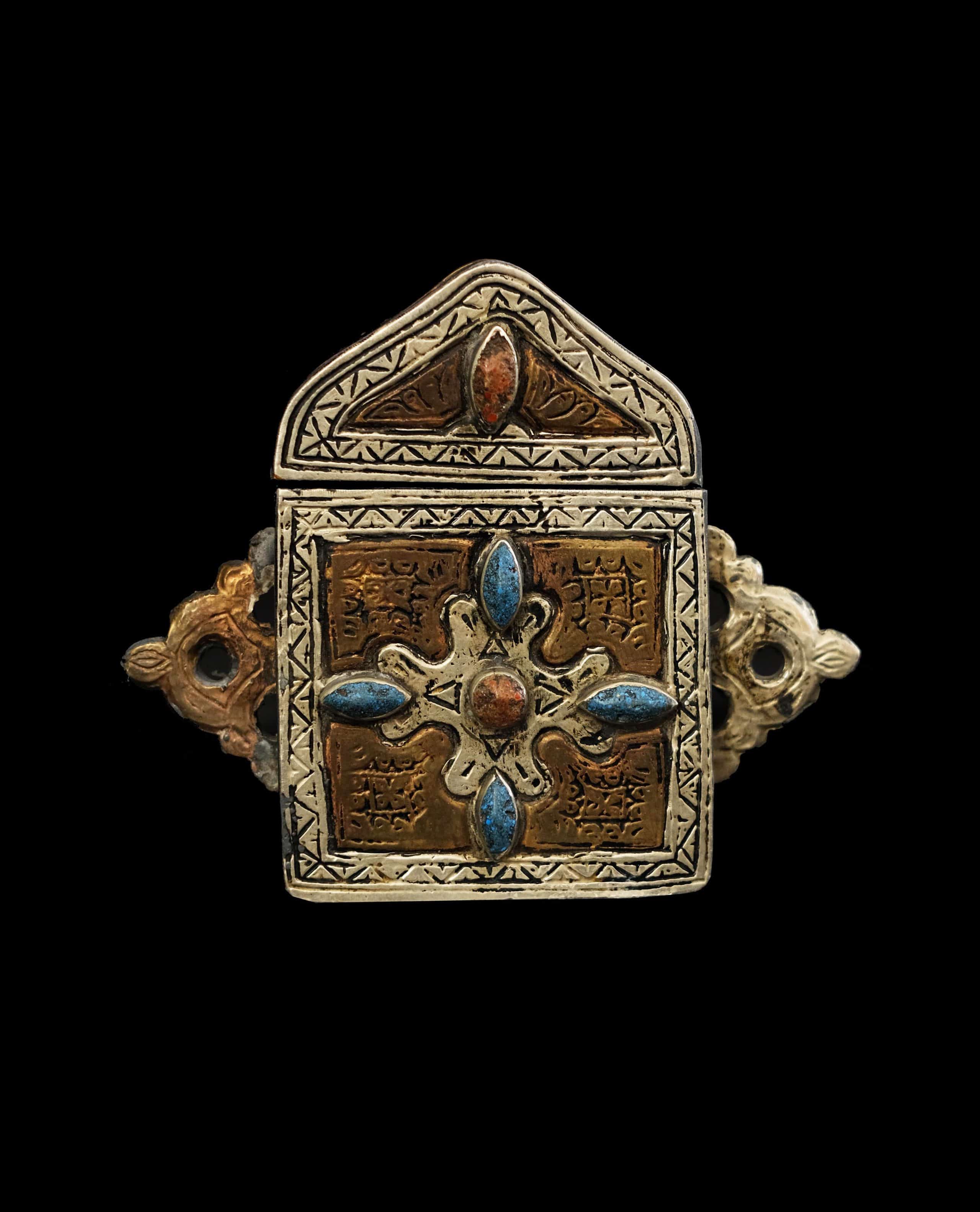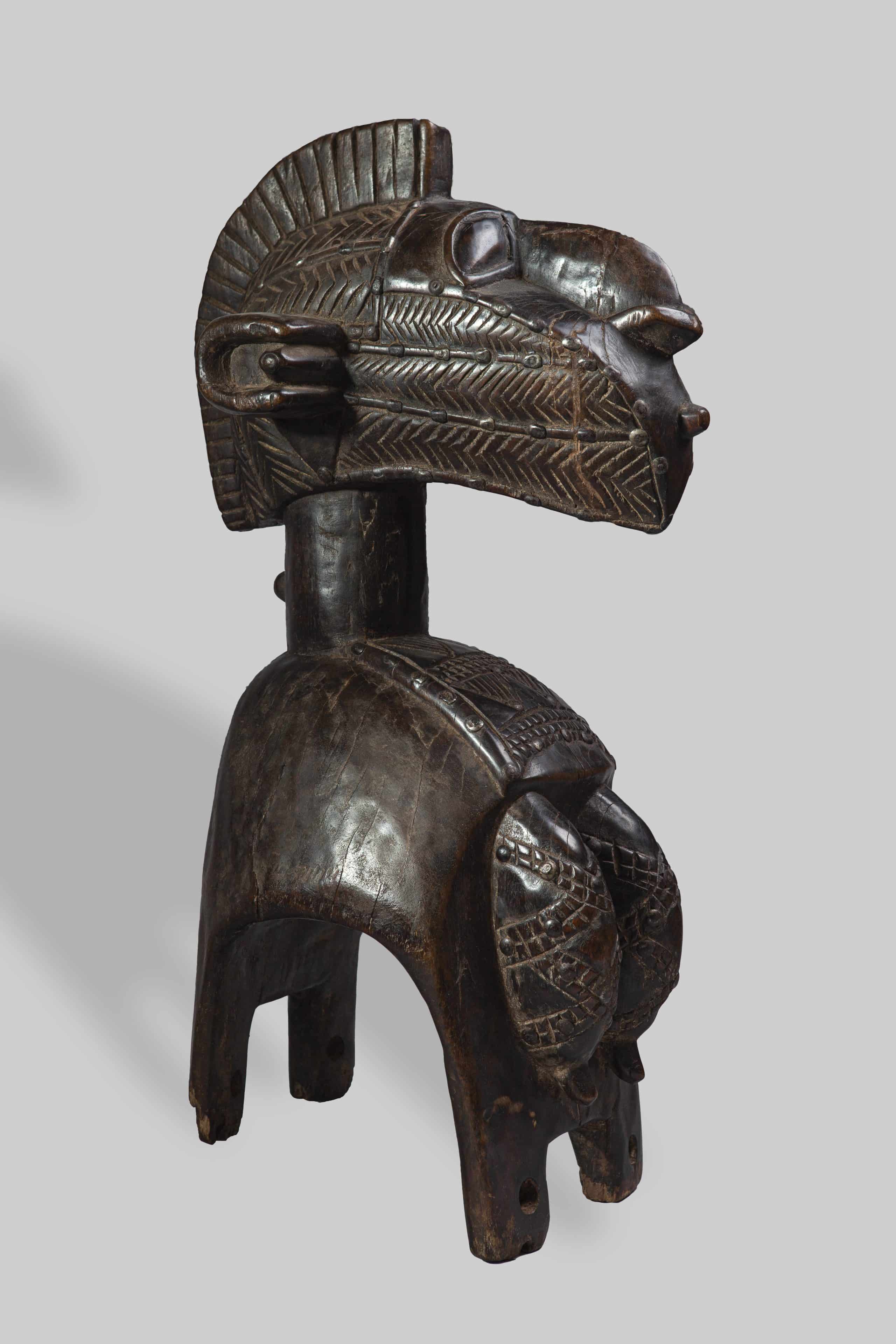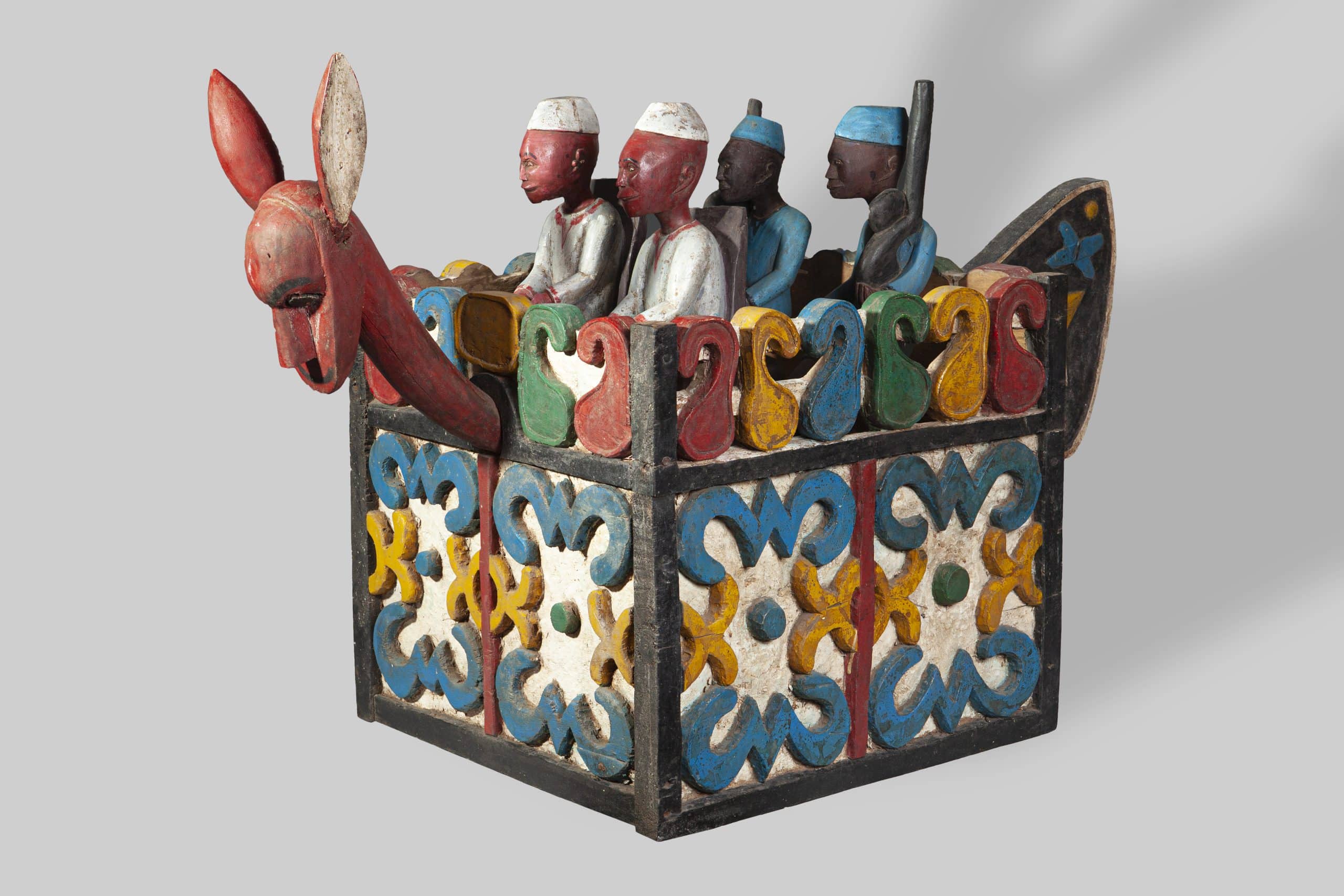
Gold Road Encounters
The exhibition “Gold Road Encounters” presents the encounter of West African religions and cultures with Islam, and opens a window onto these rich and fascinating cultures. The exhibition showcases objects that tell the story of the gold trade route through which Islam reached West Africa, linking religions and traditions.
Islam was born in the cities of Mecca and Medina in the Arabian Peninsula at the beginning of the seventh century CE. Following the death of the prophet Mohammed it gradually began to spread in Asia and North Africa. Islam arrived for the first time in West Africa, south of the Sahara Desert, an area known as Bilad a-Sudan – “Land of the Blacks” – with Muslim merchants from North Africa using camel caravans to traverse the Saharan trade routes. From then on Islam continued to slowly spread in the region.
Geopolitically speaking, the African continent in general, and its western part in particular, was composed of ethnic groups lacking a permanent political framework, and a number of kingdoms that controlled the trade routes – the Ghana Empire (700–1240), the Mali Empire (1240–the sixteenth century) and the Songhai Empire (1464–1591). The rulers of these empires realized that if they adopted Islamic customs and strengthened their ties with Islamic trade networks, they would boost both their power and their wealth. Nevertheless, they trod cautiously; behaving like Muslims in certain situations and like pagans in others, in order to satisfy both pagan majority and Muslim minority. These rulers extended their patronage to Muslim scholars as well as to traditional pagan leaders. For them Islam was the ticket to a Middle Eastern world of culture and commerce.
In the seventeenth and eighteenth centuries, Islam took root in West Africa as it started to reach rural society. In the eighteenth and nineteenth centuries, radical elements, who digressed from the moderate line that allowed Islam to coexist with local culture, sprang up in the rural society of West Africa south of the Sahara. For the first time marking non-Muslims as heretics. Meanwhile colonialist pressure increased during the nineteenth century as France and Britain showed increased interest in taking] Africa’s resources.
The traditional religions in West Africa were born and developed separately from each other, yet they shared certain animist characteristics – a main deity of creation and spirits who represented the soul of nature and the universe. In communal ceremonies spiritual leaders educated the next generation, linking the members of the community to their origins through stories of mythological figures and animals as well as creation stories and myths dating back to the community’s founding. During the ceremony, which took place after dark and was accompanied by song and dance, some of the participants wore masks, which engulfed their identity, as well as straw and textiles that concealed their bodies.
The exhibition presents a selection of masks, headdresses, ceremonial objects and objects with magical significance, which were part of the spiritual lives of various ethnic groups in West Africa south of the Sahara. Although most of the objects date to the nineteenth and twentieth centuries, they represent long-lived local traditions, and in fact, served as a means of transmitting abstract religious ideas to the community. The exhibits include sacred objects that were used as vessels to contain the essence of the spirits of the universe and the community’s founding ancestors. Some were also used in initiation rites or rites of passage practiced by secret societies that oversaw the community’s religious, political and educational social order. These societies were particularly important in small independent communities.
Along with ritual objects, items of material culture as well as archeological finds are also on display. These reflect the gold trade between West Africa and the Middle East via the Sahara. In addition on display are Qurans and Islamic amulets that were used by the Islamic communities in West Africa south of the Sahara. These exhibits reflect Islam’s impact on the spiritual life of the various ethnic groups in the region.
We thank those who readily lent us these objects and accompanied the museum’s team while preparing the exhibition: Dina and Michael Weiss, the Rouach family, the Israel Museum, Jerusalem, and the Israel Antiquities Authority.






